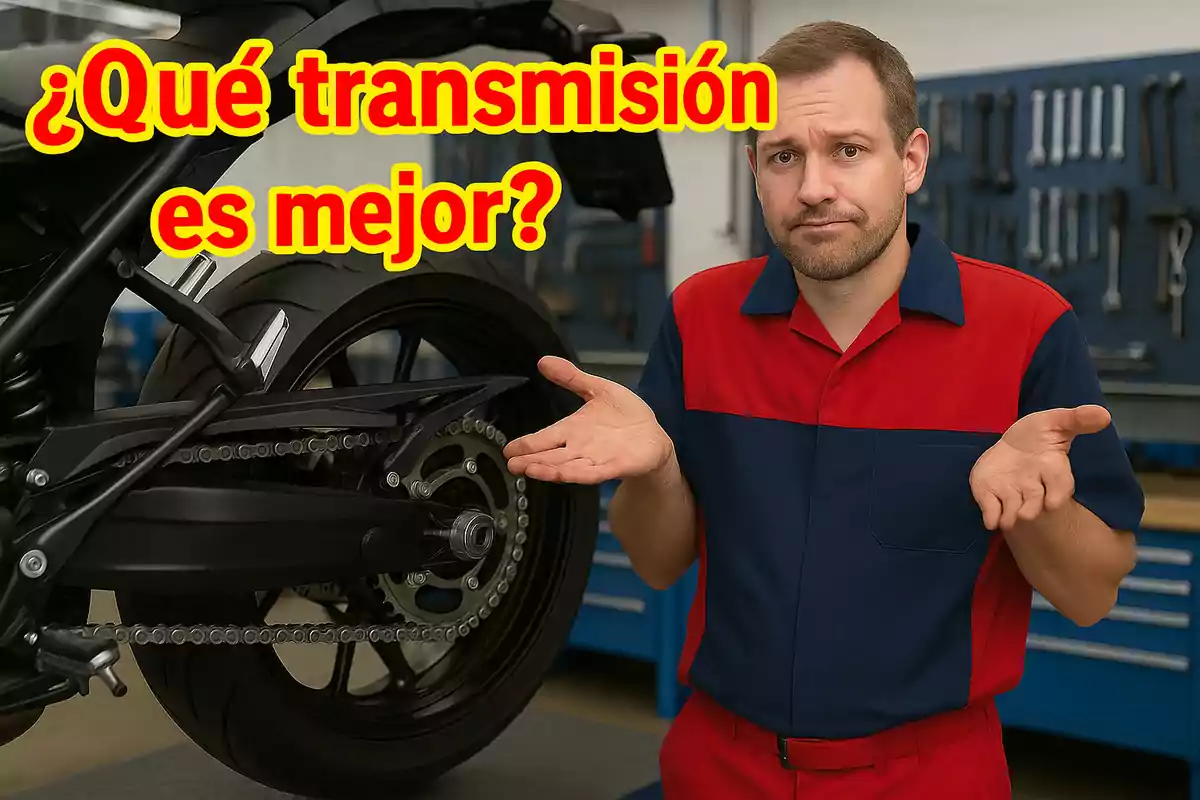
There are three options for the motorcycle to move: you can only choose one
The transmission system is essential for your motorcycle to move. Do you know how it works? Which one is better? What are their advantages?
The engine generates movement. But for the motorcycle to move forward, that force must be transmitted to the rear wheel.
How is it done? Through the transmission. Chain, toothed belt, or shaft drive are the most common systems.
Each one has its advantages and disadvantages. Not all motorcycles use the same one.
How transmission starts on a motorcycle
The movement starts at the crankshaft. In motorcycles with manual transmission, the movement goes through the clutch and the gearbox.
There, different gears change the ratio between engine revolutions and wheel revolutions. More speed or more power, depending on the selected gear.
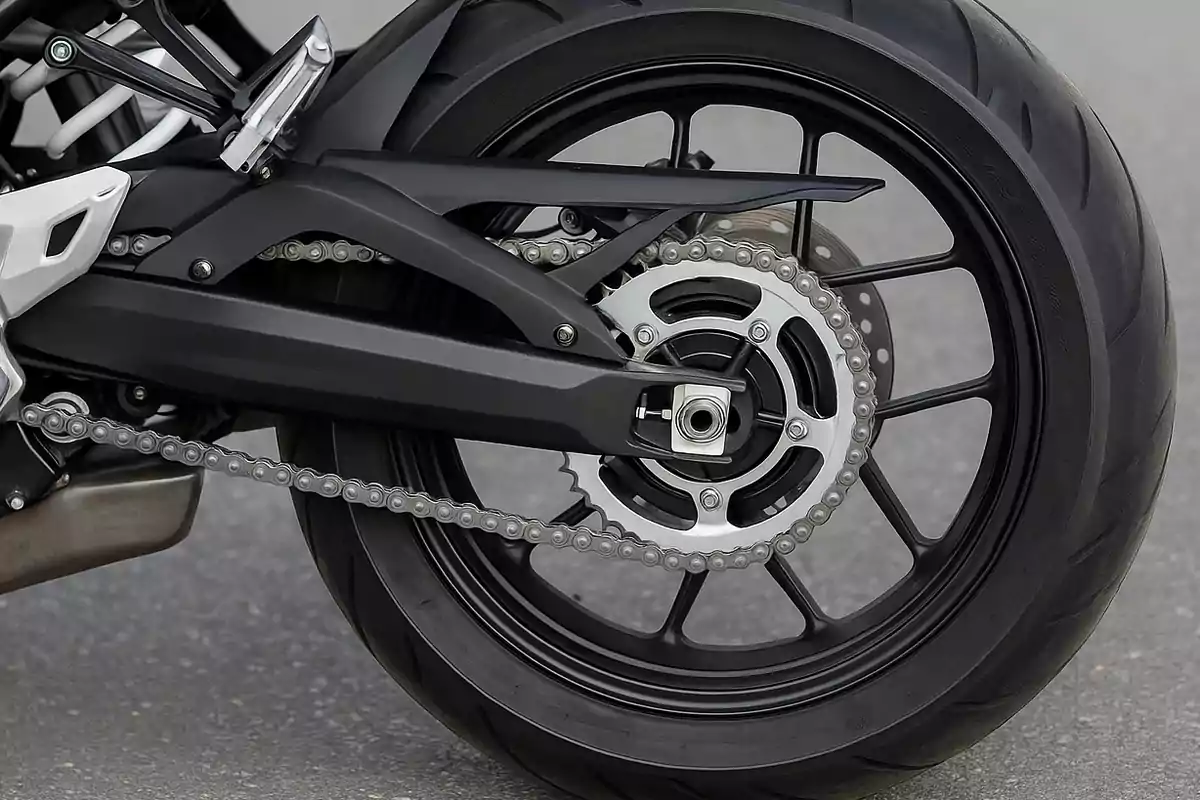
In scooters, the system is different. The crankshaft is connected to the variator. Inside, there are ramps and weights that act on a pulley.
As it spins faster, the weights separate the pulley. The belt moves and changes the transmission ratio. All without the rider's intervention.
The belt goes from the variator to the centrifugal clutch. As it spins, it connects the transmission to the rear wheel. That's how it starts moving.
It's a smooth system, without jerks. It's the usual one in scooters.
Chain for motorcycles and belt for scooters?
Not always. There are scooters with internal gear transmission or even hidden chains.

For example, Suzuki Burgman 650 had a gear train from the clutch to the wheel. Yamaha TMax uses a final toothed belt. BMW C650 used a sealed chain, hidden under a casing.
In large motorcycles there's also variety. Many use a chain. Others, especially custom and touring, use a belt or shaft drive.
How does the shaft drive work?
The shaft drive is a transmission shaft. It can come directly from the gearbox or through an angled gear.
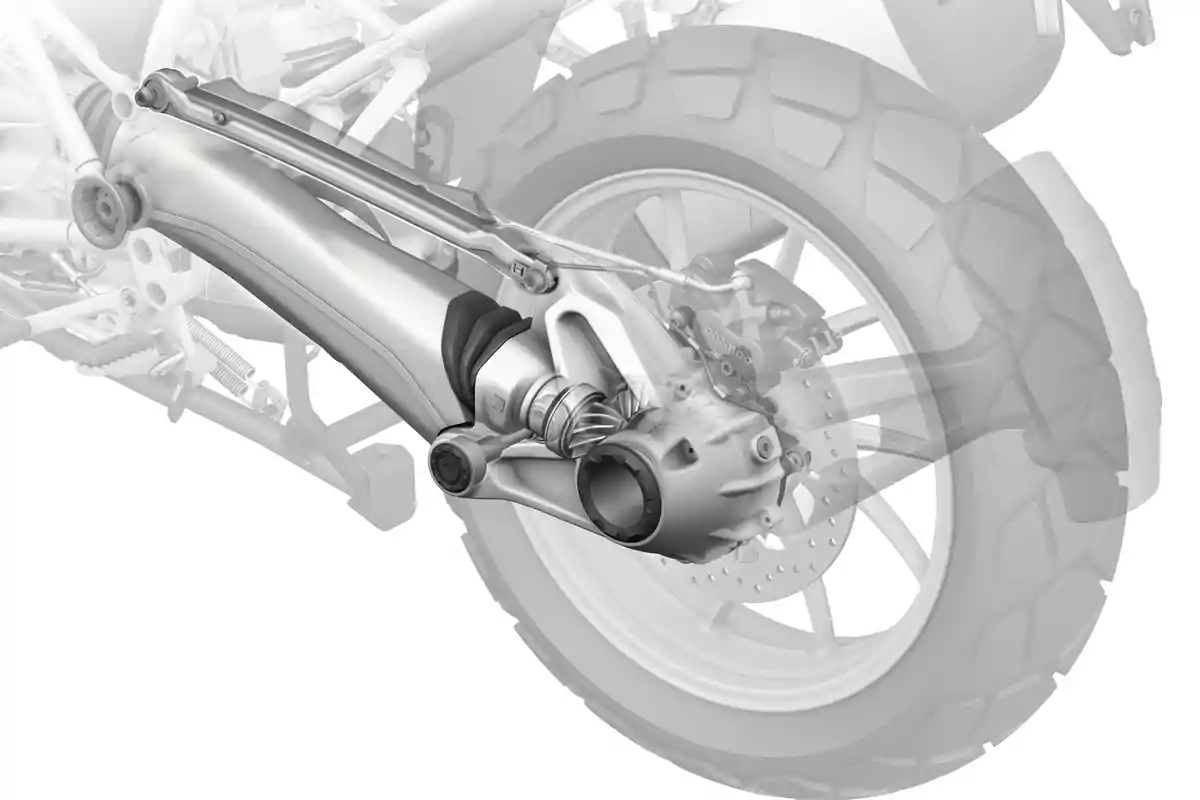
Nowadays it usually goes inside a closed arm. It includes joints to allow suspension movement.
At the rear wheel, a set of gears transfers the rotation to the wheel. Everything is sealed and bathed in oil.
Advantages and disadvantages of each system
Chain: it's the most common system. Cheap, durable, easy to repair. But it needs cleaning, lubrication and adjustment.
It allows you to change the final ratio easily. You can install another sprocket or rear gear and adapt the motorcycle's behavior.
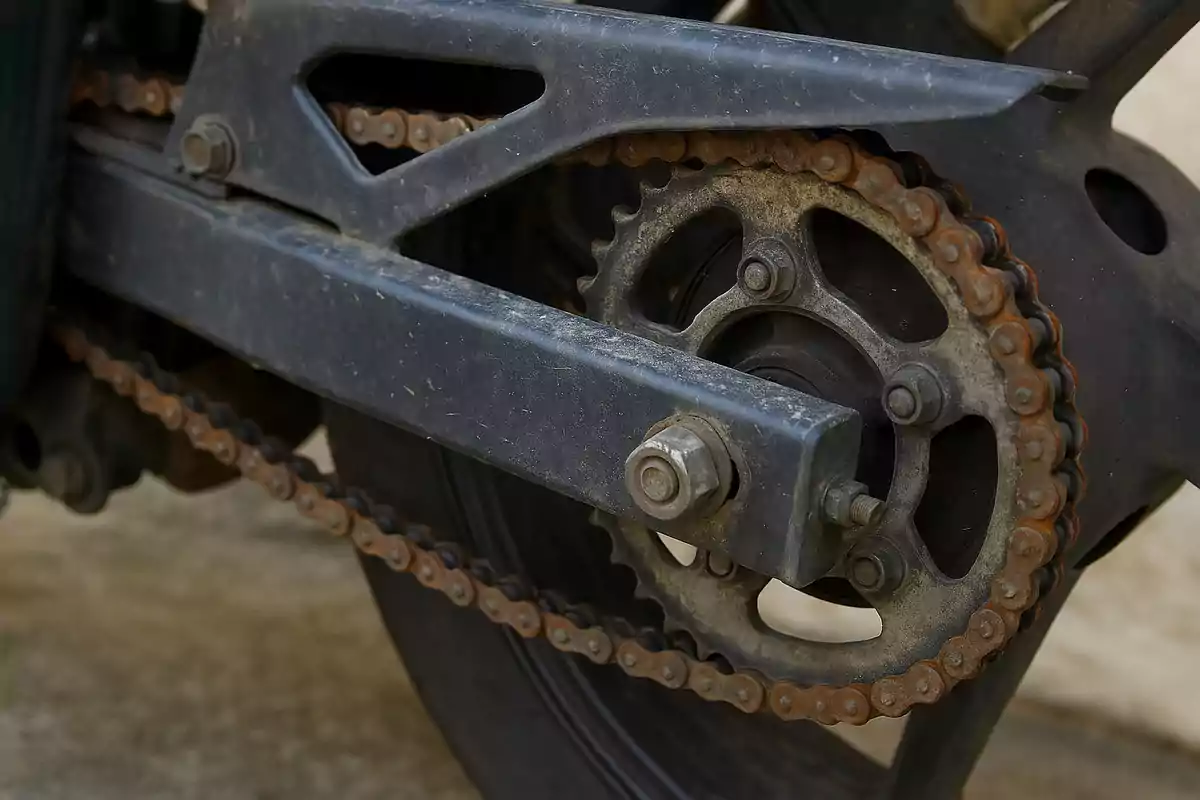
However, it gets dirty. It wears out over time. But if it breaks, it usually just falls to the ground.
Belt: it doesn't need lubrication. It doesn't get dirty. It's quieter and smoother than the chain.
It's used in custom motorcycles, like Harley-Davidson, or in premium scooters. It lasts a long time and barely needs adjustments.
But it can't handle very high power. It requires specific components.
Shaft drive: it hardly needs maintenance. You only need to check the oil level in the rear unit during inspections.
In return, it's heavier. It generates inertia that affects handling. Accelerating or decelerating abruptly can cause lateral movements.
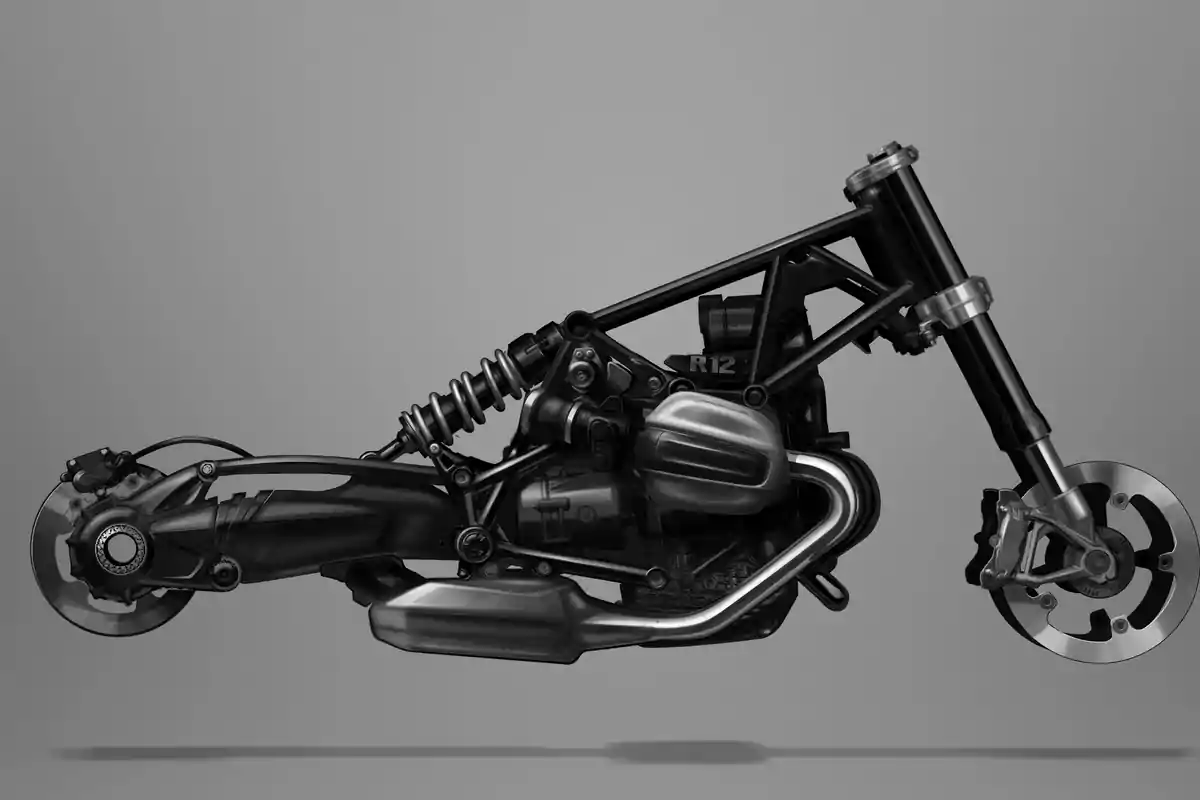
Manufacturers have worked to eliminate that effect. Today, the best motorcycles with shaft drive barely show it.
However, if it breaks, it can be serious. It's not common, but it happens.
Which is the best transmission system?
There's not one that's best for everything. Each system has its place depending on the type of motorcycle, intended use, and brand philosophy.
The chain is ideal for sport motorcycles. The belt works well in custom or scooters. The shaft drive is perfect for touring or long distances.
It all depends on what you're looking for. How much maintenance you're willing to do.
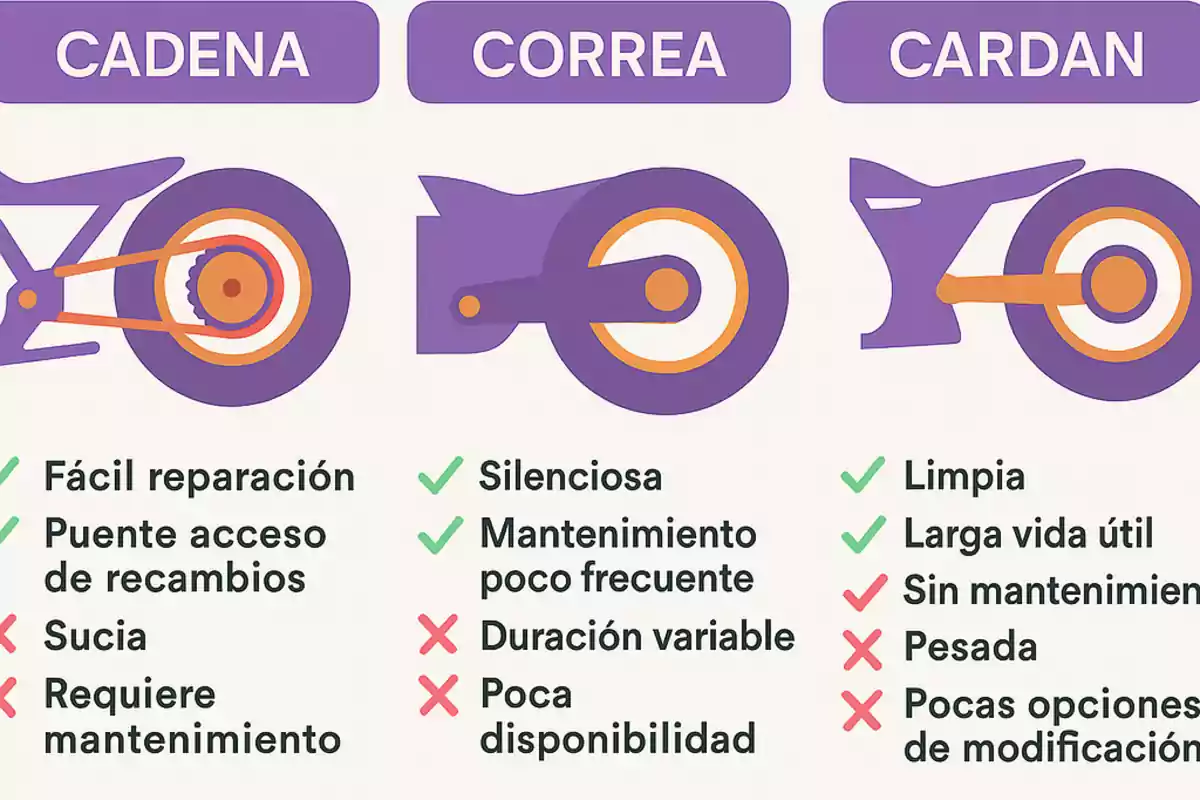
More posts: